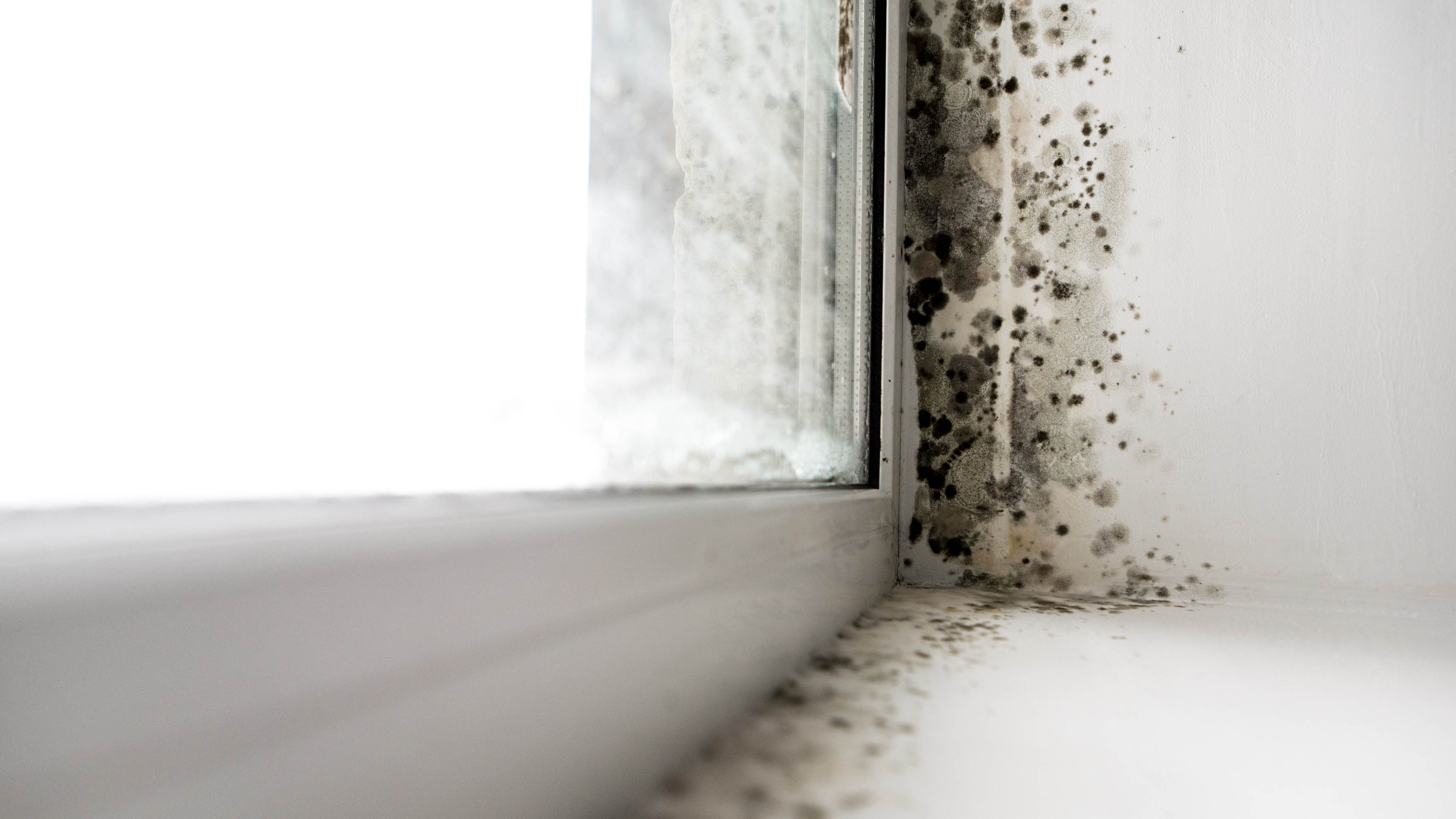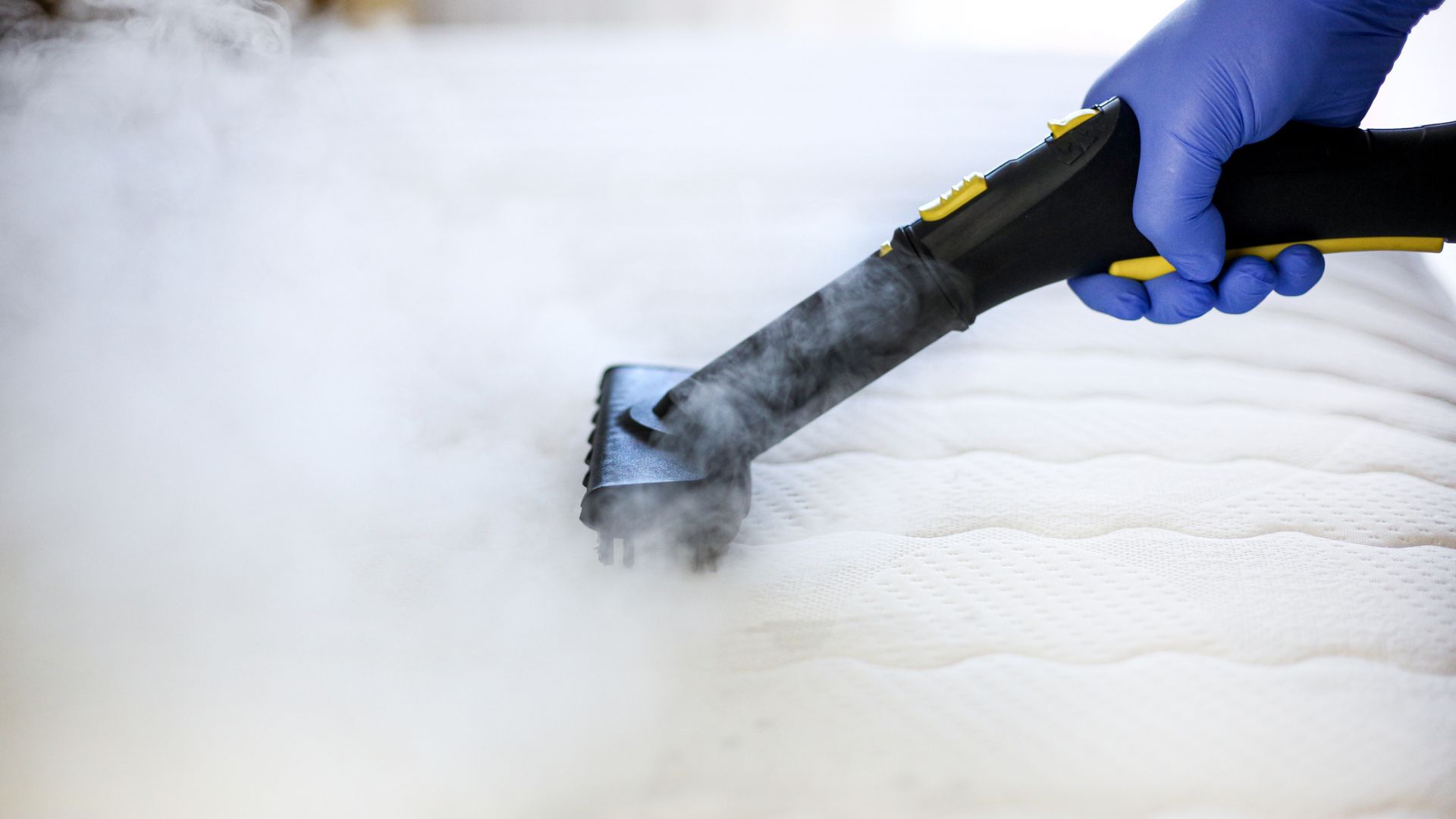Professional cleaner warns you should never use a steam cleaner to remove mold — here's why

Spotting mold in your home is a stressful situation because it's not an easy fix. Simply scrubbing the mold off your walls doesn't eliminate the problem, so coming up with a long-term solution should be your top priority.
Mold happens when there's excess humidity or moisture in your home – whether that's from build up of condensation on your windows or not properly airing out your home. While that's less of a problem in the summer months, it's always a great idea to be clued up on how to get rid of mold for good.
While there's lots of excellent tips on the best ways to tackle mold, some of them aren't effective at all. And cleaning expert Matthew Harrison at PriceYourJob.co.uk points out one you might've heard about that you should actually avoid – steam cleaning.
Why you should never use a steam cleaner to remove mold

You may have heard that high-temperature steam cleaning is an effective way to remove mold from your home. But, it's not, and here's why.
Matthew explains: "Steam needs to be really hot to kill mold, so many domestic steam cleaners just aren't effective".
So, picking up a steam cleaner for your home isn't as simple as it sounds. And, Matthew adds: "Steam cleaners also raise the moisture levels in a room. So, you risk creating the perfect environment for mold to grow back quickly. Pressurized steam can force spores into the air".
"Steam needs to be really hot to kill mold, so many domestic steam cleaners just aren't effective".
Matthew Harrison, cleaning expert
Not only is your steam cleaner not hot enough to kill the mold, it's also encouraging it to grow in your home even further.
Get instant access to breaking news, the hottest reviews, great deals and helpful tips.
Matthew does recommend a low-steam cleaner though, since it won't increase the humidity too much, but he adds: "You may need to follow up with a natural or chemical mold cleaner to be sure you've removed it all".
And honestly, it sounds like more effort than it's worth when there's other effective methods you can opt to try instead.
What you should do instead

While we've written a guide on how to get rid of mold and stop it from coming back, Matthew was also happy to impart his wisdom on the best methods he suggests, too.
His best and easiest method? Mold and mildew cleaners. But, he says, there's two different types of cleaners, so you'll want to make sure you're picking the right one for you.
Firstly, the chloride-based mold and mildew cleaners, which Matthew says: "Can be used on tiles, grout and silicone sealants, so it's well-suited to clearing mold from bathrooms and kitchens".
Or, the biocidal mold and mildew cleaners. For these, Matthew suggests they're "usually more suitable for use on textiles, timber and plastic" as there's no bleaching effect.
If you're keen to opt for a natural cleaner, Matthew recommends white vinegar, lemon juice, tea tree oil (diluted in water) or baking soda. With these natural solutions, he does say that you'll need to do a little more scrubbing to rid your home of the stubborn mold.
And finally, if you're after something a little less toxic than the shop-bought mold and mildrew cleaners on the market, you can dilute hydrogen peroxide (with a patch test first) that'll produce less fumes.
How to stop mold returning
Of course, you don't want to go to all this hard work to remove the mold and not putting preventative measures in place to stop it from coming back. Most likely the cause of your mold is moisture, so this moisture needs to be addressed.
Luckily, Matthew also has some top tips on things you can do to stop mold growing back for good:
- Check your roof and clean out gutters every six months
- Install extractor fans in your kitchen and bathroom
- Hang your washing outside
- Use a dehumidifier, especially if drying laundry inside
- Put the heating on when it's cold
- Open your windows daily
While steam cleaners are out of the picture, dehumidifiers are definitely in when it comes to preventing a mold issue in your home. And some of the best dehumidifers range from budget models, specifically for targeting damp, and even for small spaces.
The HomeLabs 22 Pint Dehumidifier is our top pick for small spaces (500 square feet or less), thanks to its sleek, contemporary design, small stature and ability to tackle moisture. It'll remove 22 pints of water per day from your home, which will be a great help when trying to stay on top of moisture management and ultimately prevent mold from growing in your home.
More from Tom's Guide

Grace is a freelance journalist working across homes, lifestyle, gaming and entertainment. You'll find her writing for Tom's Guide, TechRadar, Space.com, and other sites. If she's not rearranging her furniture, decluttering her home, or relaxing in front of the latest streaming series, she'll be typing fervently about any of her much-loved hobbies and interests. To aid her writing, she loves to head down internet rabbit holes for an unprecedented amount of time.
You must confirm your public display name before commenting
Please logout and then login again, you will then be prompted to enter your display name.

